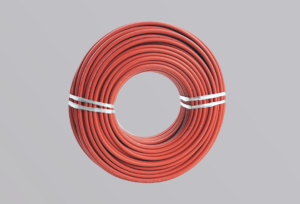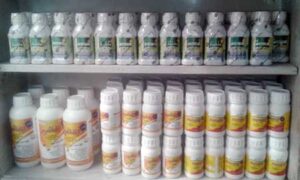
Introduction
Imagine walking into a factory where every machine hums a different tune, working together like a well-rehearsed orchestra. This transformation in manufacturing—from the clunky, hands-on assembly line to sleek, automated systems—has reshaped our economy and daily lives. But how did we get here? Let’s explore the journey from assembly lines to automation, and see what the future holds for manufacturing.
The Birth of the Assembly Line
The concept of the assembly line isn’t new. It dates back to the early 19th century when craftsmen would painstakingly create items one at a time. However, it wasn’t until the early 20th century that the assembly line truly took off, thanks to innovations in production techniques.
This method allowed factories to produce goods much faster and more efficiently. Instead of one person making an entire product, workers would focus on a single task, passing the item down the line. Think of it as a relay race, where each runner has a specific role that contributes to the overall victory. car wreckers sydney nsw
Henry Ford and Mass Production
No discussion about assembly lines is complete without mentioning Henry Ford. In 1913, he revolutionized the manufacturing world by introducing the moving assembly line for the production of the Model T car. This method reduced production time from over 12 hours to just 93 minutes!
Ford’s approach not only made cars affordable for the average person but also set the stage for mass production techniques across various industries. His mantra was simple: efficiency leads to lower costs and increased accessibility.
The Shift to Automation
As technology advanced, the limitations of traditional assembly lines became apparent. Factories began to adopt automation, integrating machines that could perform tasks without human intervention. This shift meant that products could be made faster, with fewer errors, and at a lower cost.
Automation can be likened to upgrading from a bicycle to a motorcycle. While both get you to your destination, the motorcycle does so much faster and with less effort!
Key Innovations in Manufacturing Technology
Several key innovations have driven the shift toward automation:
- Computer Numerical Control (CNC): CNC machines automate tools for precision work, allowing for intricate designs that would be nearly impossible by hand.
- 3D Printing: This technology enables the creation of complex shapes by layering materials, making it possible to produce customized items quickly.
- IoT (Internet of Things): Machines connected via the internet can communicate and optimize production in real-time.
These advancements have pushed the manufacturing sector into a new age, where flexibility and speed are paramount.
Robotics: The New Workforce
With the rise of automation, robots have become integral to modern manufacturing. They perform repetitive tasks with precision, reduce workplace injuries, and allow human workers to focus on more complex responsibilities.
Imagine a robot as a highly skilled assistant—always on call, tireless, and capable of executing tasks flawlessly. While some fear robots will replace human jobs, they often complement human efforts, leading to improved productivity.
Industry 4.0: The Smart Factory
We are now in the era of Industry 4.0, characterized by smart factories where machines communicate with each other and make autonomous decisions. This interconnected environment enables manufacturers to react swiftly to market demands.
Think of it like a well-orchestrated dance. Each dancer (or machine) knows its role and timing, resulting in a performance that’s both efficient and stunning.
The Role of Data and AI in Manufacturing
Data plays a crucial role in modern manufacturing. By collecting and analyzing data, companies can identify trends, forecast demands, and streamline processes.
Artificial Intelligence (AI) enhances these capabilities by enabling machines to learn and adapt. For instance, an AI system can predict maintenance needs, minimizing downtime and keeping production lines running smoothly.
Challenges of Automation
Despite its benefits, automation brings challenges. Job displacement is a significant concern. Many workers fear that their roles may become obsolete as machines take over.
Moreover, the initial investment in automation technology can be daunting for small businesses. Balancing the advantages of automation with its costs and societal impacts is crucial for sustainable growth.
The Impact on Jobs and Employment
The transformation in manufacturing has sparked a debate about job security. While automation may eliminate some roles, it also creates new opportunities in tech and engineering.
Think of the shift as a natural evolution. Just as horses were replaced by cars, new technologies can lead to new types of jobs. Upskilling and reskilling workers will be essential to prepare them for the future workforce.
Sustainability in Modern Manufacturing
Sustainability is increasingly becoming a focal point in manufacturing. Automated systems can optimize energy use, reduce waste, and implement eco-friendly practices.
Manufacturers are now expected to be stewards of the environment, creating products in a way that minimizes their ecological footprint. Embracing sustainable practices can also lead to cost savings and improved brand loyalty.
Globalization and Its Effects
The rise of automation has also been influenced by globalization. Companies can now source materials and labor from around the world, driving competition and innovation. Cash For Unwanted Cars Central Coast
However, globalization can create disparities. Some regions may benefit from new technologies while others fall behind, highlighting the need for equitable solutions.
The Future of Manufacturing
What does the future hold for manufacturing? As technology continues to evolve, we can expect even greater levels of automation and innovation. Concepts like additive manufacturing, biomanufacturing, and smart supply chains will reshape the industry.
In this rapidly changing landscape, adaptability will be key. Manufacturers that embrace change and invest in technology will likely thrive in the future.
Conclusion
From the assembly line to automation, the evolution of manufacturing reflects broader societal changes. While challenges exist, the potential for innovation and growth is immense. As we move forward, it’s essential to strike a balance between embracing technology and considering its impacts on people and the planet.







